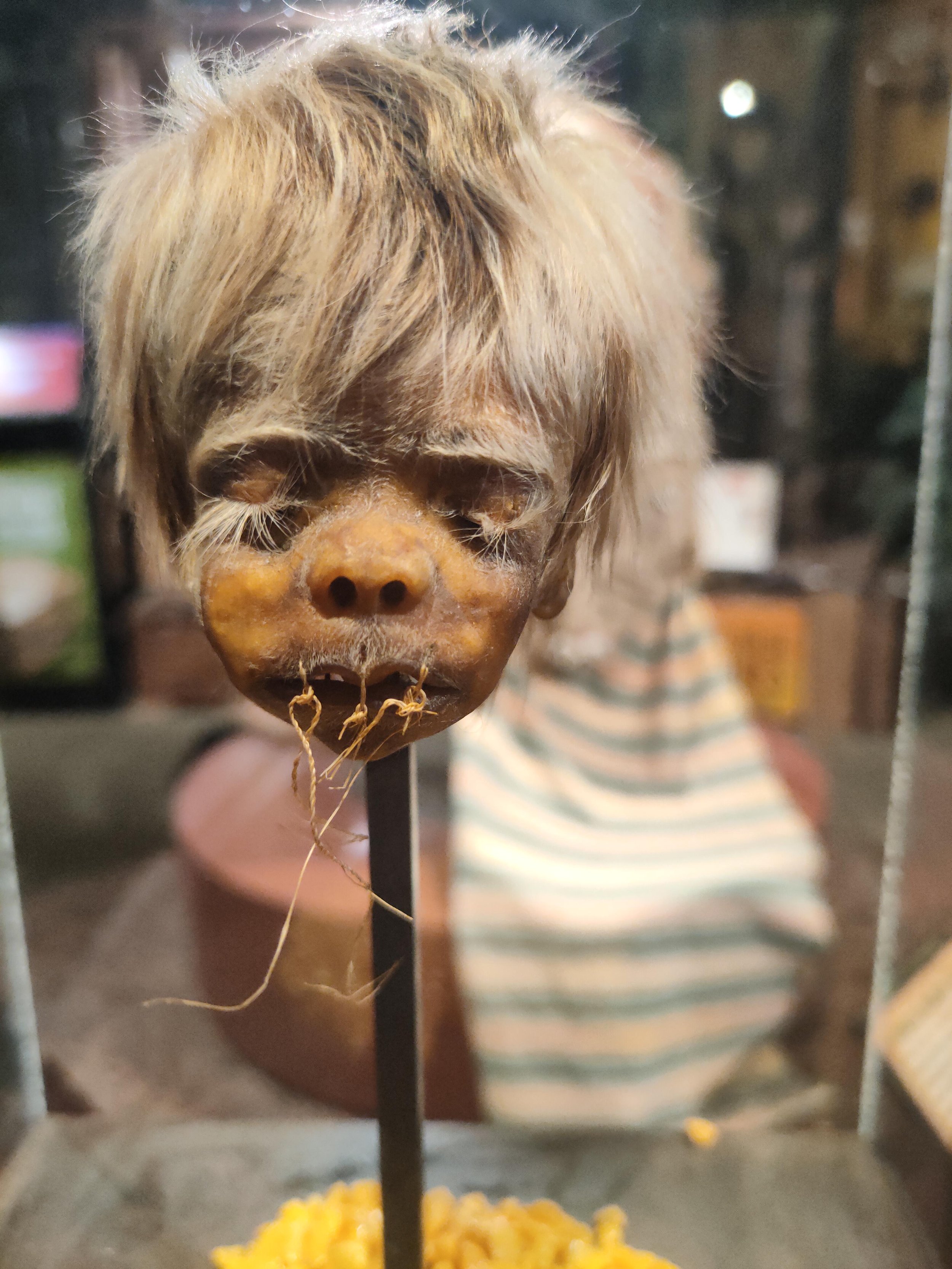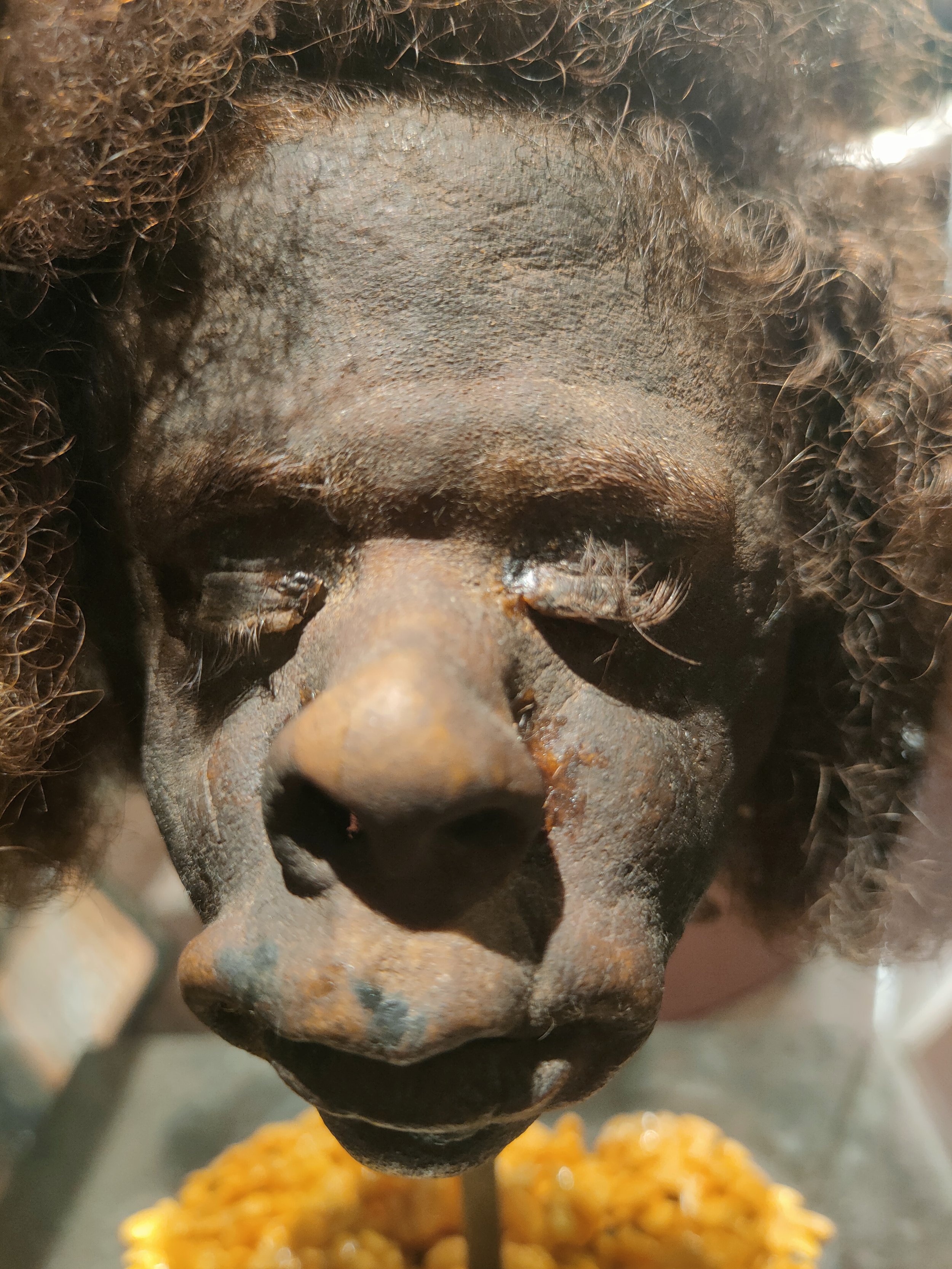Shrunken heads at Surfers Paradise
A five year old child’s shrunken head.
There they sit – in the basement of a Ripley’s Believe It or Not — the jazz hands of museums — in Surfers Paradise on the sunny Gold Coast of Australia.
How far from home they are — these people whose shrunken heads or tsantsas are originally from the faraway jungles of the Amazon.
How odd they seem, housed near James Brown’s famous “sex” jumpsuit and a picture of the Last Supper made entirely out of burnt toast.
They rest in glass cases in a room exuding a “tribal” vibe. A life-size figure of an indigenous person sits on a fake rock on a permanently spinning lazy Susan. Surrounding him are a number of tsantsas, including one belonging to a five-year-old child.
Who is he? Who are they?
How did their anatomy get to this?
A nearby video shows a re-enactment of the gory head-shrinking process. A cut is made from the top of the head to the base of the skull. The skin is then placed in boiling water for a period of time. The lips and eyelids were then sewn shut, and the little head filled with stones, ash, and sand to be dried by the campfire.
Collectors, anthropologists, and museum plaques have long claimed that the heads were the war trophies of enemy heads chopped off after battle and then shrunk down to avenge the dead. The practice was found among the Shuar and Achuar People of Ecuador and Northern Peru, and the Munduruku of Northern Brazil.
But in recent years, members of the Shuar community have said these claims are false, and that the tsantsas were not made from the heads of random enemies but clan leaders. Some of them died from natural causes.
Jefferson Acacho told The Guardian in 2020: “When a leader died, it was a way to show respect for them.”
Who is this man?
This is one of the few shrunken heads on display in Australia. Are there others out there? I don’t know.
“The lips and eyes were sewn together because it was thought that a head could still see and eat after death, which would give it more power. This would prevent them from gaining more power and causing harm.”
Interestingly, while Jefferson advocates for the return of the tsantsas to his people, he was surprisingly open to their exhibition, as long as the displays are curated by the Shuar. I can see his point. They say so much but also need saving in a sense, particularly at the Surfers Paradise venue. The curators could tone down the tackiness a notch, provide better historical context, and do some basic fact-checking.
The heads first came to the attention of the modern West in the 19th century when Italian missionaries set up shop in the jungles of Ecuador and Peru. Not only did they preach, they also separated the children from their parents and sent thousands of them to boarding schools.
A certain Father Crespi was particularly taken by the heads and brought them back with him to the Vatican, and the fad soon spread across the world. It triggered a market in fakes, which were often made of sloths, monkeys, and goats.
While museums like the Pitt Rivers take their heads off the shelves, forensic anthropologists have set about studying their genetics to see if they are real, where they are really from, and for what purpose they were produced.
A 2021 Ecuadorian study found 14 of the heads held in national museums in Ecuador were all human, and included one woman and thirteen men and were Native American.
In 2022, a Canadian study wielding micro-CT scanners revealed a blunt truth: a shrunken head held at the Chatham-Kent museum in Ontario had been produced in a way that suggested commercial intent, more likely a macabre product produced by the Shuar than a sacred artifact.
James Brown’s “Sex” Suit.


